Reasons for the smell
Before running to the store for advice and expensive cleaning products, let's try to figure out where the unpleasant smell from the washing machine comes from:
- One of the most common causes of a musty "smell" is misuse. After washing, the machine must be ventilated for at least 2 hours, leaving the door and powder compartment open.
- Do not forget about washing the rubber cuff, in the folds of which moisture and small particles of debris can remain. The water under the seal gradually turns into mold. The longer it stays in the machine, the harder it will be to get rid of it.
- Do not put dirty clothes in the drum when using it as a laundry basket. Storing clothes in the washing machine is guaranteed to create an unpleasant odor.
- Another non-obvious reason for the problem is changing the detergent to a lower quality one. Some cheap detergents build up on the walls and start to smell over time.
- A dirty litter tray can also create a musty odor, as mold often forms on it.
- A clogged drain filter that has caught fluff, buttons and other small items from your clothing may start to rot, causing the machine to give off an unpleasant odor.
- A broken drain pump is another reason for the "odor". Due to its breakdown, water may stagnate in the device, which is not visible to the eye, which gradually begins to fade. You will get the same result if the machine is installed crookedly.
- An unpleasant smell can be provoked by wastewater entering the tank from the sewer. To avoid the problem, the drain must be properly installed.
- A silted hose can also become a source of stench: in low-quality devices, a lot of debris and powder remain on its walls, which become a favorable breeding ground for fungi and bacteria.
- Residues of detergents, lint and various impurities in hard water also adversely affect the condition of the tubular electric heater (TEN), settling on it in the form of scale and giving a rotten smell.
The photo shows a way to check a rubber seal for mold. It must be removed in time so that pathogenic bacteria do not multiply.
How to get rid of the smell?
In the fight against unwanted aromas, first of all, it helps to eliminate their sources, which means that the washing machine must be washed from dirt with the help of chlorine-containing agents and left open for a day. We advise you not to postpone the procedure indefinitely, since delay threatens to break the product at any time. First of all, this recommendation applies to those who have never been involved in cleaning the product.
On the advice of a specialist working with professional equipment of laundries and dry cleaners, the sanitization of the automatic machine should be carried out with means of the "Domestos" type. The procedure is simple: pour the composition into a cuvette and start the wash cycle.All unfavorable environment in the device will die and go into the sewer, cleaning the internal parts: pipes, drain valve and the space between the tank and the drum.
Aggressive components contained in chlorine bleaches destroy the unpleasant odor in the washing machine and actively corrode salt deposits and mucus, but at the same time negatively affect the internal elements. This is why cleaning should not be done too often. Consider more gentle ways to tidy up the device.
Lemon acid
The musty smell in the washing machine can be easily removed using inexpensive folk remedies. You can remove it with ordinary citric acid.
How to do it:
- Pour 100 g of lemons into the powder compartment.
- We turn on the washing machine at a temperature of 90 degrees.
- We are waiting for the end of the cycle.
- We start rinsing.
- At the end of the program, wipe the rubber band and drum dry.
- We leave the hatch open to get rid of the dampness to the end.
With frequent washing, this procedure can be carried out once a month, adding only 2 tablespoons of citric acid. In other cases, we recommend using this method no more than once a quarter.
Vinegar
To remove unpleasant amber from the washing machine, table vinegar is also suitable. He will cope not only with pathogenic flora, but also with limescale on the metal tube.
How to clean:
-
Pour a glass of vinegar into the tray.Read also
- We start washing at the maximum temperature.
- We are waiting for the end of the main wash.
- We press the "pause" button.
- We leave the machine for two hours so that the vinegar in combination with hot water has time to take effect.
- We remove the washing machine from a pause: it should start from the "rinse" mode.
- After completing the wash, rinse the filter from the exfoliated scale.
Do not clean with vinegar more than once every six months, otherwise rubber parts may be damaged. As a preventive measure, vinegar is poured into the air conditioner compartment in the amount of three tablespoons.
In the photo, the use of vinegar instead of a rinse aid: it additionally protects against the appearance of a rotten smell.
Baking soda
Sodium bicarbonate, a natural deodorizer and cleanser, helps remove mold and mildew from the inside and outside of the device.
Instructions for use for the washing machine:
-
We mix a glass of soda and warm water.Read also
- We apply the solution to the parts covered with mold.
- We put another 250 g of soda into the powder compartment.
- We turn on the machine to work at the highest possible temperature.
- After the end of the program, start the rinse additionally
In the photo, soda, the addition of which will soften the matter, keep the laundry snow-white and enhance the effect of the washing powder.
Dishwasher tablets
Modern means effectively and quickly rid dishes of grease, food debris, kill germs and remove odors.
How to use dishwasher tablets in the washer? It's simple:
- Place 5 tablets in the drum.
- We turn on the wash cycle at high temperatures.
- We start rinsing.
- We wipe all uncovered parts.
This is an effective way to remove light dirt and prevent the formation of limescale.
Prophylaxis
If folk remedies seem less effective than store-bought remedies, it is worth purchasing formulations specially designed to remove unpleasant odors.
Most manufacturers indicate on their packaging information about when the product will work. The most suitable composition must be selected for each contamination. When buying, you should carefully study the instructions.
In order for the machine to serve as long as possible and not bother with unwanted aromas, we recommend following these simple guidelines:
-
After each wash, it is necessary to remove moisture from the accessible surfaces of the appliance and open the hatch for ventilation.Read also
- It is important to monitor the amount of detergent and conditioner: their excess accumulates on the walls and causes an unpleasant rotten "smell".
- Do not forget to periodically clean the tray and the detergent rinse channel. The drain filter of the washing machine must be cleaned every six months.
- If you suspect a breakdown, it is important to contact a foreman in time, who will professionally identify and fix the problem.
- A dirty drain hose should be cleaned by running the empty machine at the highest possible temperature. If the method doesn't work, the part may need to be replaced.
- To avoid scale, you should periodically use special detergents for cleaning the washing machine or chlorine bleach, if this does not contradict the instructions for the device.
- Always inspect things before washing, remove paper, coins and other items from pockets that could clog the filter.
If you often wash clothes with buttons and fittings, follow a simple advice: check the insides for foreign elements before starting the machine - this habit will help to avoid many problems in the future. The fact is that sharp and small objects can ruin the rubber seal, drum or internal parts. Laundry bags can be used to avoid breakage.
The photo shows an example of proper care of the machine: after each wash, wipe the powder tray, the inside of the drum and the rubber cuffs by folding them back.
Correct operation and respect for household appliances are the key to their longevity. An unpleasant smell from a washing machine is easier to prevent than to deal with its consequences later. Timely maintenance of the washing machine is much more profitable than repairing it yourself, inviting a specialist or buying a new product.


 10 practical tips for arranging a small kitchen in the country
10 practical tips for arranging a small kitchen in the country
 12 simple ideas for a small garden that will make it visually spacious
12 simple ideas for a small garden that will make it visually spacious

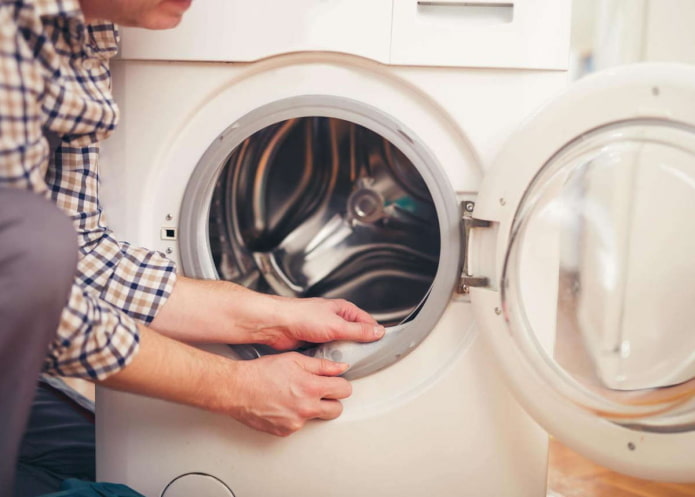

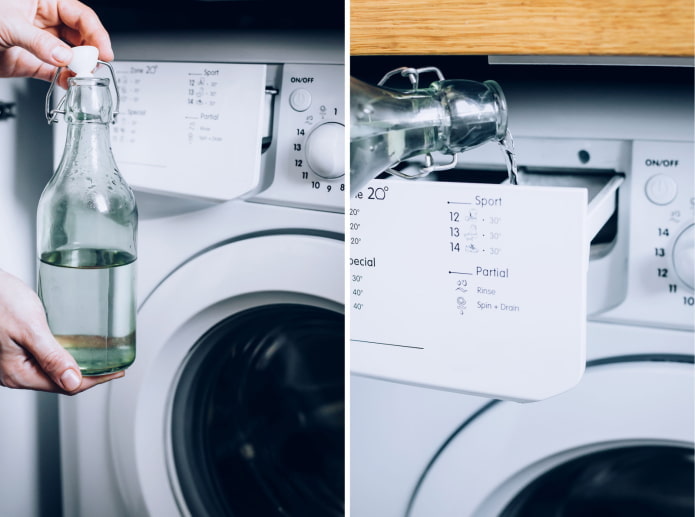

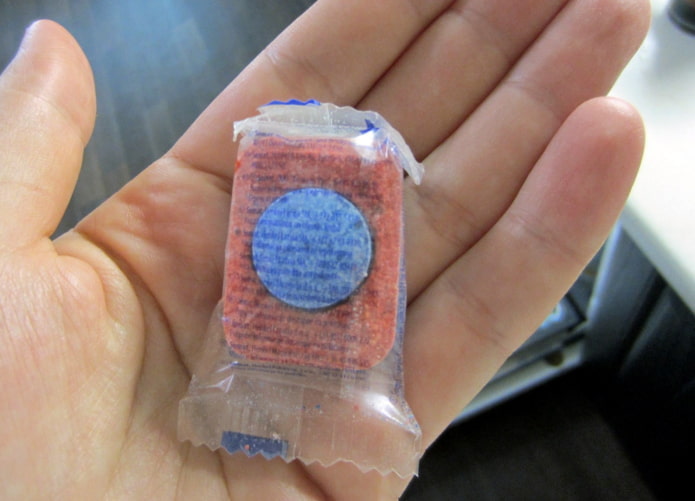
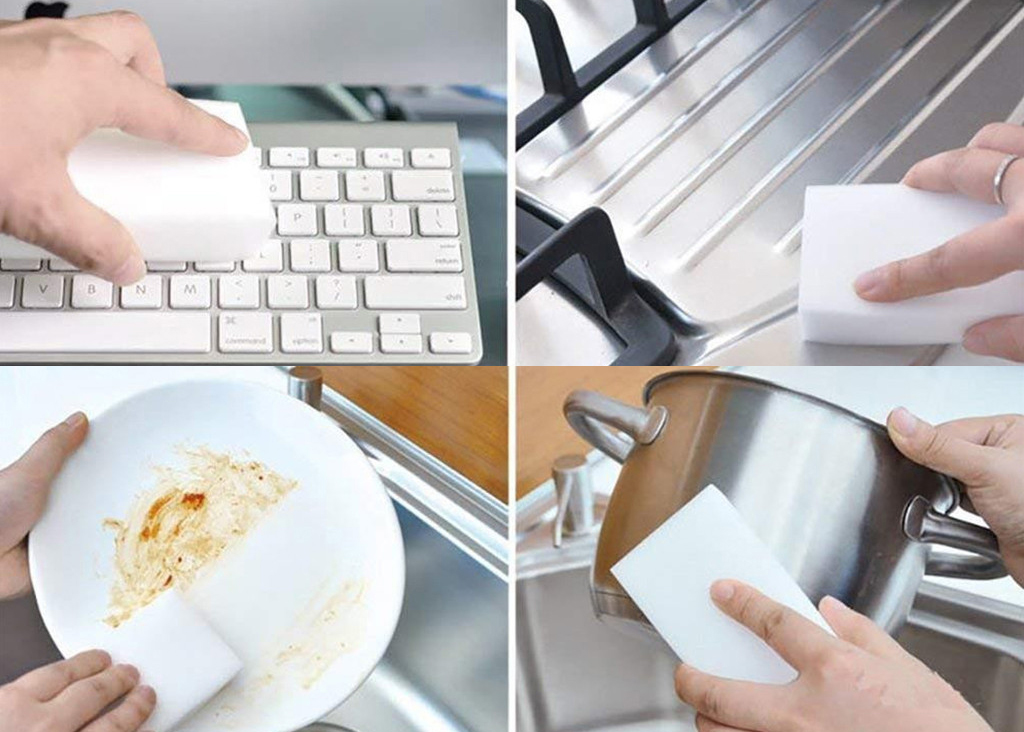

 How to position the washing machine in a small bathroom?
How to position the washing machine in a small bathroom?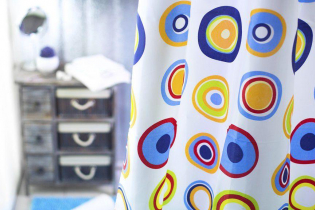 How to remove plaque from the bathroom curtain?
How to remove plaque from the bathroom curtain? 7 common mistakes in small apartment renovation that eat up all the space
7 common mistakes in small apartment renovation that eat up all the space Apartment layout: how not to be mistaken?
Apartment layout: how not to be mistaken? Wallpaper for the bathroom: pros and cons, types, design, 70 photos in the interior
Wallpaper for the bathroom: pros and cons, types, design, 70 photos in the interior Modern bathroom interior: 60 best photos and design ideas
Modern bathroom interior: 60 best photos and design ideas